
Delft is a city and municipality in the province of South Holland, Netherlands. It is located between Rotterdam, to the southeast, and The Hague, to the northwest. Together with them, it is part of both Rotterdam–The Hague metropolitan area and the Randstad.

South Holland is a province of the Netherlands with a population of just over 3.7 million as of November 2019 and a population density of about 1,373/km2 (3,560/sq mi), making it the country's most populous province and one of the world's most densely populated areas. Situated on the North Sea in the west of the Netherlands, South Holland covers an area of 3,419 km2 (1,320 sq mi), of which 605 km2 (234 sq mi) is water. It borders North Holland to the north, Utrecht and Gelderland to the east, and North Brabant and Zeeland to the south. The provincial capital is the Dutch seat of government The Hague, while its largest city is Rotterdam. The Rhine-Meuse-Scheldt delta drains through South Holland into the North Sea. Europe's busiest seaport, the Port of Rotterdam, is located in South Holland.

Johannes Vermeer was a Dutch Baroque Period painter who specialized in domestic interior scenes of middle class life. During his lifetime, he was a moderately successful provincial genre painter, recognized in Delft and The Hague. Nonetheless, he produced relatively few paintings and evidently was not wealthy, leaving his wife and children in debt at his death.
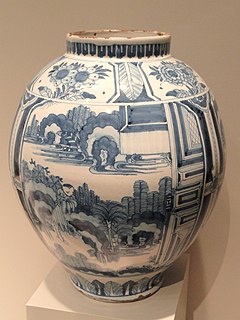
Delftware or Delft pottery, also known as Delft Blue, is a general term now used for Dutch tin-glazed earthenware, a form of faience. Most of it is blue and white pottery, and the city of Delft in the Netherlands was the major centre of production, but the term covers wares with other colours, and made elsewhere. It is also used for similar pottery, English delftware.

Schiedam is a city and municipality in the west of the Netherlands. It is located in the Rotterdam–The Hague metropolitan area, west of Rotterdam, east of Vlaardingen, and south of Delft. In the south the city is connected with the village of Pernis by the Beneluxtunnel.
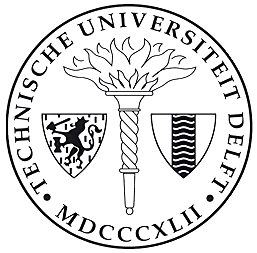
Delft University of Technology, also known as TU Delft, is the oldest and largest Dutch public technical university. Located in Delft, Netherlands, it is consistently ranked as one of the best universities in the Netherlands, and as of 2020 it is ranked by QS World University Rankings among the top 15 engineering and technology universities in the world.

Naarden is a city and former municipality in the Gooi region in the province of North Holland, Netherlands. It has been part of the new municipality of Gooise Meren since 2016.

Delfshaven is a borough of Rotterdam, Netherlands, on the right bank of river Nieuwe Maas. It was a separate municipality until 1886.
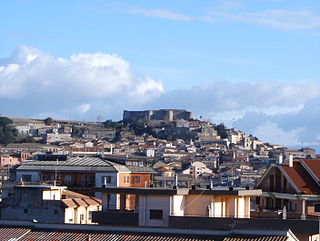
Vibo Valentia is a city and comune (municipality) in the Calabria region of southern Italy, near the Tyrrhenian Sea. It is the capital of the province of Vibo Valentia, and is an agricultural, commercial and tourist center. There are also several large manufacturing industries, including the tuna district of Maierato. Very important for the local economy is Vibo Marina's harbour.

The Nieuwe Kerk is a Protestant church in the city of Delft in the Netherlands. The building is located on Delft Market Square (Markt), opposite to the City Hall. In 1584, William the Silent was entombed here in a mausoleum designed by Hendrick and Pieter de Keyser. Since then members of the House of Orange-Nassau have been entombed in the royal crypt. The latest are Queen Juliana and her husband Prince Bernhard in 2004. The private royal family crypt is not open to the public. The church tower, designed by Pierre Cuypers and completed in 1872, is the second highest in the Netherlands, after the Domtoren in Utrecht.
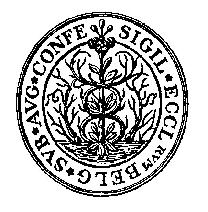
The Evangelical Lutheran Church in the Kingdom of the Netherlands was a denomination in the Netherlands which under that name existed from 1818 to 2004. In 2004, the denomination became a part of the Protestant Church in the Netherlands, which is the continuation of the Dutch Reformed Church, the Reformed Churches in the Netherlands and the Evangelical-Lutheran Church in the Kingdom of the Netherlands.

The Singel is one of the canals of Amsterdam. The Singel encircled Amsterdam in the Middle Ages, serving as a moat around the city until 1585, when Amsterdam expanded beyond the Singel. The canal runs from the IJ bay, near the Central Station, to the Muntplein square, where it meets the Amstel river. It is now the inner-most canal in Amsterdam's semicircular ring of canals.
Johann Heinrich Hartmann Bätz was a German-Dutch organ builder.

The Delft School is a category of mid-17th-century Dutch Golden Age painting named after its main base, Delft. It is best known for genre painting: images of domestic life, views of households, church interiors, courtyards, squares and the streets of that city. Carel Fabritius and Nicolaes Maes are seen as the originators of these localised specialties in the 1640s that were continued in the 1650s by Pieter de Hooch and Johannes Vermeer. Vermeer is the most famous of these painters today. The architectural interiors of Gerard Houckgeest, Emanuel de Witte and Hendrick Cornelisz. van Vliet are also notable contributions. Besides the genres most closely associated with Delft painters, artists in the city continued to produce still life and history paintings, portraits for patrons and the court, and decorative pieces of art that reflect more general tendencies in Dutch art of the period.

The Oost-Indisch Huis is an early 17th-century building in the centre of Amsterdam. It was the headquarters of the Amsterdam chamber of the Dutch East India Company. It is a listed Dutch national heritage site (rijksmonument).

The City Hall in Delft is a Renaissance style building on the Markt across from the Nieuwe Kerk. It is the seat of the city's government as well as a popular venue for civic wedding ceremonies. Most administrative functions have been transferred to an office inside the Delft railway station building. Originally designed by the Dutch architect Hendrick de Keyser, it was heavily changed over the centuries and was restored in the 20th century to its Renaissance appearance.

The Leiden choirbooks are six volumes of polyphonic renaissance music of the Franco-Flemish school copied for the Pieterskerk, Leiden and now preserved at the Erfgoed Leiden en Omstreken.
The following is a timeline of the history of the municipality of Delft, Netherlands.

In 1586, scientists Simon Stevin and Jan Cornets de Groot conducted an early scientific experiment on the effects of gravity. The experiment, which established that objects of identical size and different mass fall at the same speed, was conducted by dropping lead balls from the Nieuwe Kerk in the Dutch city of Delft. The experiment is considered a foundational moment in the history of statics, which Stevin's work helped to codify.
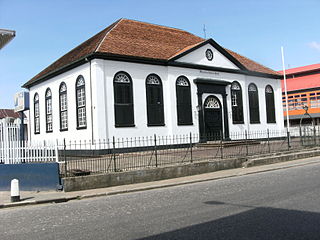
The Martin Luther Church is a church of the Evangelical Lutheran Church in Suriname. It is located on Waterkant in the historic centre of Paramaribo, Suriname. The building is a monument. The first church burnt down in 1832. The current church dates from 1834.


















